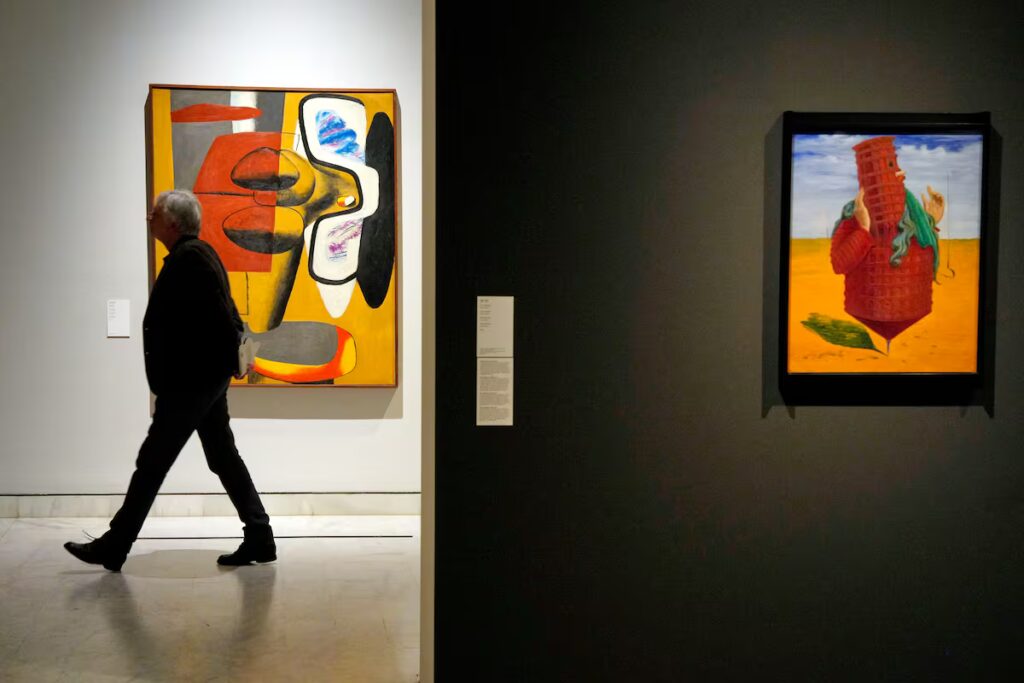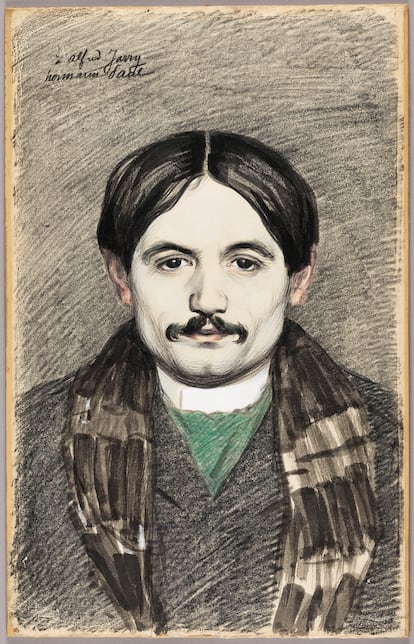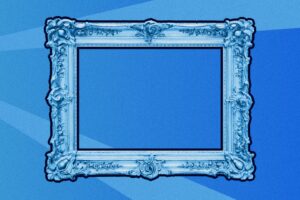
Alfred Jarry (Laval, 1873-Paris, 1907) premiered the opera King Ubu on 10 December 1896 in Paris at just 23 years old. The chronicles of the time speak of laughter and insults. They didn’t know that the plump and delirious character they brought to the stage, an image of totalitarian despotism, would become a representative of the blackest humor and a first-rate literary icon. The piece was performed two afternoons. But the lack of applause did not prevent the work from being recognized in the artistic sphere as a parody of opera Macbeth by William Shakespeare and even today, in the midst of local and global political turbulence, Ubú is still very relevant. The Picasso Museum in Barcelona opens on Wednesday Ubu painter. Alfred Jarry and the arts (until April 5), an exhaustive artistic investigation into the author, the work that revolutionized artistic Paris at the end of the 19th century and his influence as a precursor of the theater of the absurd, Dadaism and surrealism.
Divided into nine sections, the exhibition combines chronological and thematic order. Considering some of the publications in which Jarry began as an art critic, the museum director and curator of the exhibition, Emmanuel Guigon (Morteau, France, 66 years old), explains the importance of Ubu as a character. For him it is on the same level as Ulysses, Don Quixote or Madame Bovary. “Ubu has become a universal archetype,” he explains. “But, unlike his predecessors, the character overcomes all taboos. Since his first appearance in King Ubuhis grotesque, disproportionate and comically cruel figure scandalized the public and paved the way for a modern myth. It symbolizes unbridled speech, unleashed power and defiant freedom, traits that Jarry has also adopted in his life as an extension of the character. “Ubú has established himself as a modern star, not without humor.”
Son of an upper-class family, Alfred Jarry was able to study in Paris without graduating. The premature death of his parents, when he was just twenty, allowed him to have money with which he could indulge his love for taverns and absinthe. In the exhibition posters we read that his scattered life did not prevent him from producing a work that was as erudite as it was innovative in just 15 years (he died at the age of 34 due to tuberculous meningitis). Thanks to his art texts, he discovers then unknown artists and now undisputed masters such as Paul Gauguin, Pierre Bonnard, Armand Seguin or the customs officer, in whose house he settles when all the inherited money runs out. He also became friends with the nabis Paul Sérusier and Édouard Vuillard, as well as with Toulouse-Lautrec and Félix Vallotton, who illustrated many of his works, such as Father Ubu’s Almanacwith images by Pierre Bonnard. All these artists are abundantly represented in the exhibition thanks to loans from museums such as the Pompidou and the Musée d’Orsay.

At the start of the exhibition, which spans two floors of the building, there is a photograph of Alfred Jarry pedaling a bicycle from which he was said to be inseparable. Embedded in the sports press, a portrait of Jarry signed by the artist Hermann-Paul stands out in which he appears very young and serious. While putting the finishing touches on the assembly, the museum director talks about having met King Ubu when I was about 14. “The impact was enormous. It’s a very strong text. I studied and worked a lot on Jarry and his character.”
For the sake of this admiration, in 2000 he held a small exhibition on Ubú at the Valencian Institute of Modern Art and, as a great bibliophile, he researched and acquired every text linked to the author’s universe. “Periodically, exhibitions are dedicated to Jarry in many European cities,” but Guigon assures that this exhibition opening in Barcelona is “the most ambitious.” Not only for the mass of works on display, 489 objects including paintings, drawings, magazines and bibliophilia, but because it is the result of the most complete research conducted so far on the Ubú phenomenon and its author.

Surreal inspiration
One of the many chapters of the tour explains the popularity achieved by Alfred Jarry, despite the poor reception King Ubu. This is a posthumous recognition led by André Breton, who dedicated a conference to him in March 1918. Jarry then became an inspiration for the Surrealists. Breton completed the operation of making it known by inserting it in his anthology of black humor in 1940. The exegesis of his work was carried out by the College of Pataphysics, the society dedicated, among other things, to the search for “imaginary solutions” for non-existent problems. In this area dedicated to surrealism, Max Ernst’s spectacular oil painting stands out. Ubu emperor (1923), on loan from the Pompidou Museum.

It is not known for certain whether Jarry and Picasso met in person, but there is no doubt that they knew each other. Both are present in one of the most evocative exhibition sections. It is said that six months after the outbreak of the Civil War, Picasso created a series of cartoons to accompany the war Guernica in the Spanish pavilion at the 1937 Paris International Exhibition. It is a sort of comic in which Franco is evoked as a Christian knight in medieval armor. We see him “facing the sun”, like a tightrope walker in the trenches, with an excessive phallus or on the back of a pig. The councilor assures that the comparison with Ubú is evident. The poet left a strong impression on the young Picasso since 1905. This fascination led him to illustrate Ubú, to collect his works and his engravings. It is said that Picasso kept Jarry’s revolver as a relic.
In Catalan theatres
The exhibition ends with a succession of rooms in which the reception of the Ubú in Catalonia, a fundamental chapter in its stage history, is told. From the first performance of King Ubu in 1964 at the Adrià Gual School of Dramatic Arts – behind closed doors and documented by Pilar Aymerich – until the emblematic Death of the Merma Created by La Claca and Joan Miró, the character has inspired some of the most daring theatrical proposals in the area. In 1981, the Teatre Lliure consolidated this welcome Operation Ubuin collaboration with Els Joglars and with scenes by Fabià Puigserver, an adaptation that became a milestone in the contemporary Catalan scene for being a brilliant parody of the then president of the Generalitat, Jordi Pujol.
The farewell
Emmanuel Guigon has directed the Picasso Museum in Barcelona since 2016. The agreement with the Municipality expires in 2026. In this decade, visitors have multiplied and, most importantly for Guigon, the people of Barcelona have made their own a museum that was Picasso’s gift to the city. The exhibition that opens today will probably be the last one he signs as director. For next spring he has two projects: The architect AND Picasso and Mediterranean archaeology. Happy and proud of the scientific and informative level reached by the museum’s exhibitions, the director prefers not to talk about future projects. He only replies that he would like to stay at the museum until March to finish the work in progress and then continue with his publications and exhibitions.





